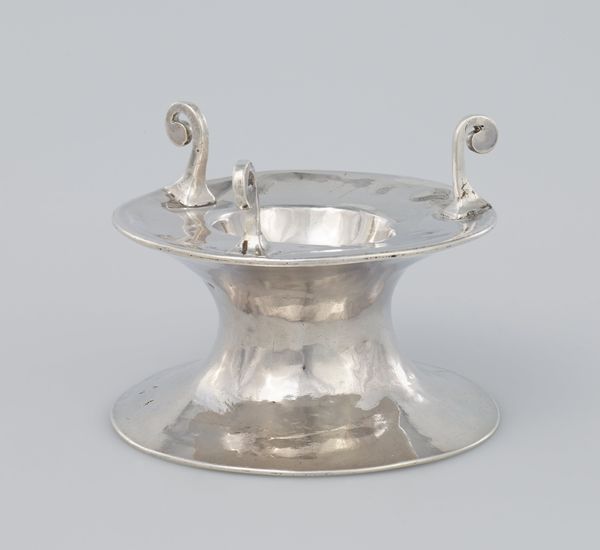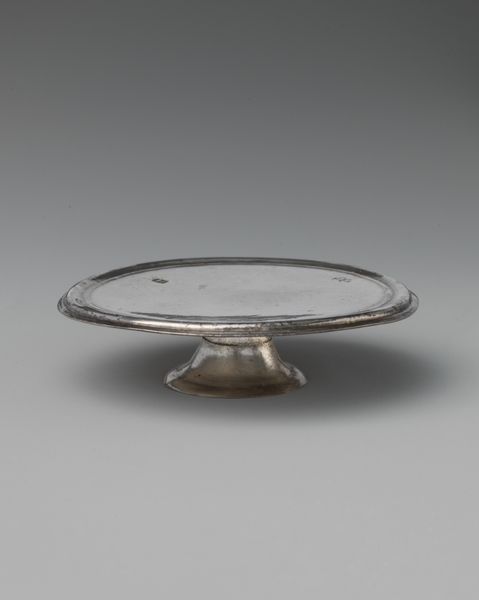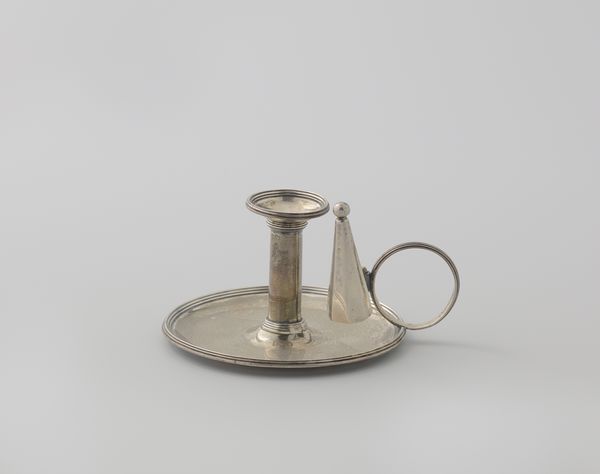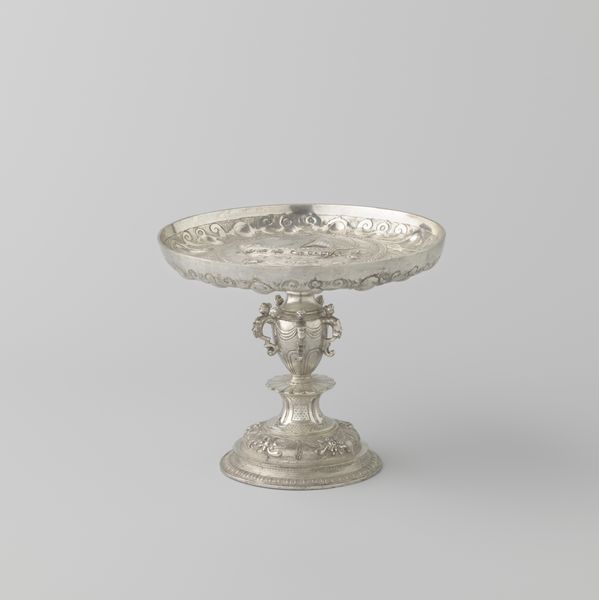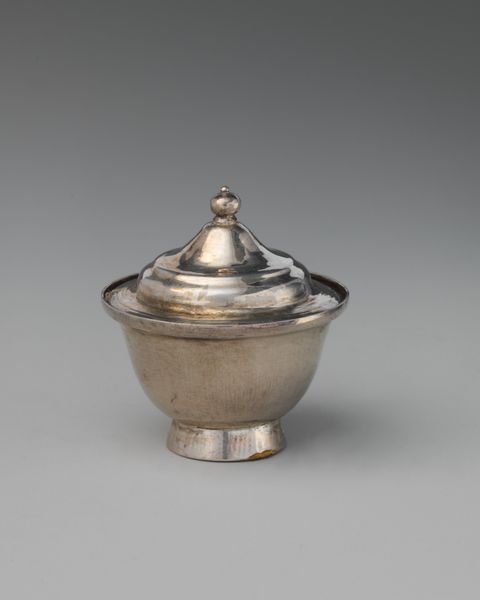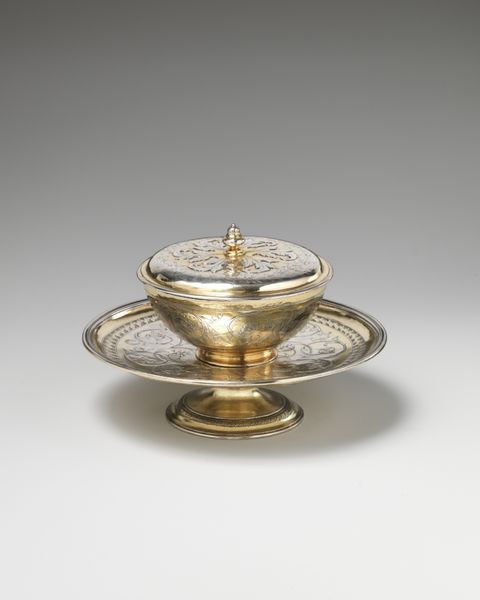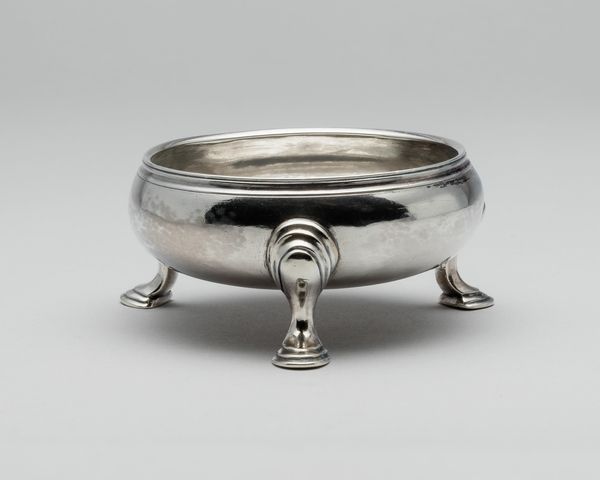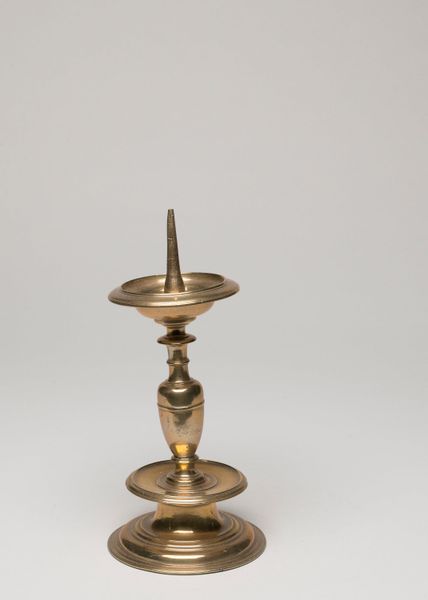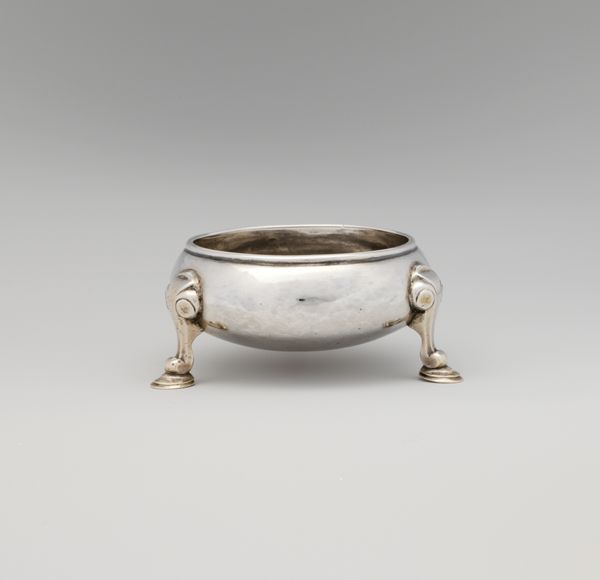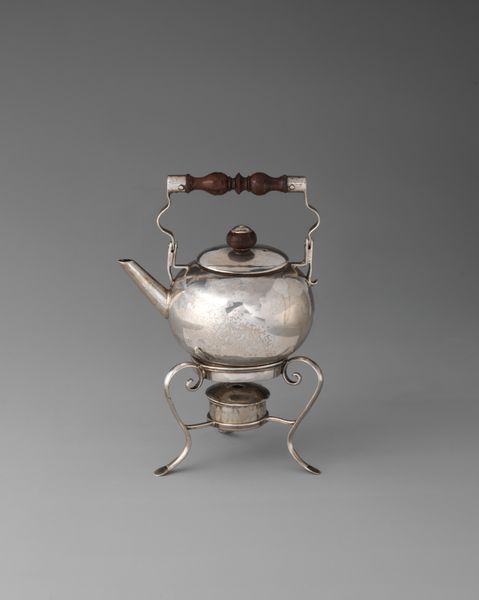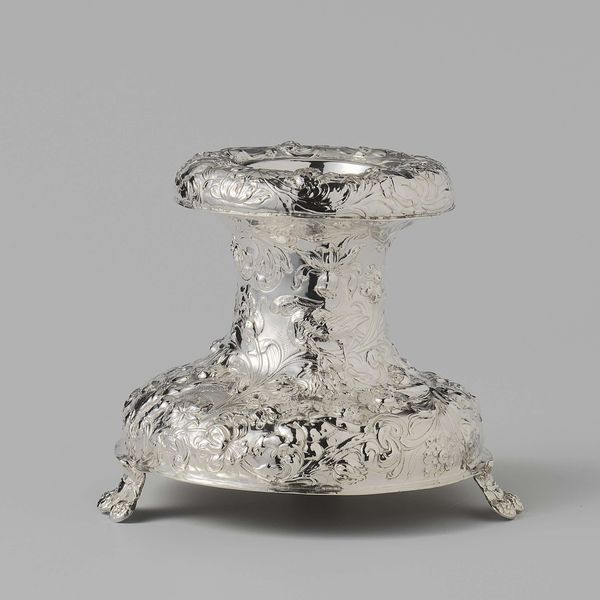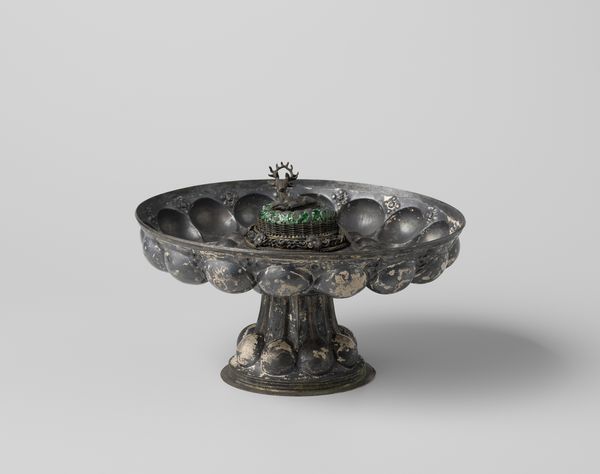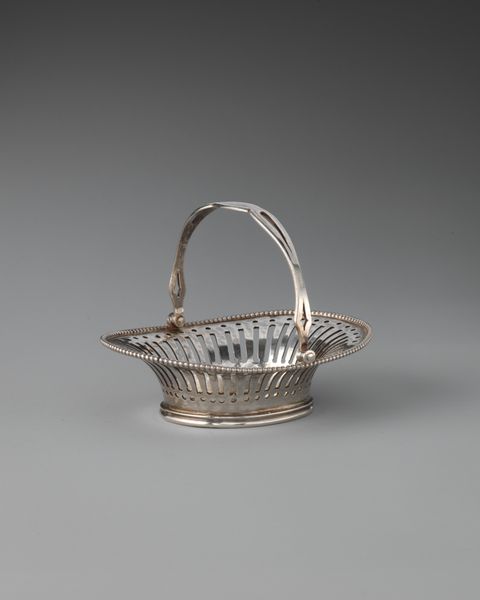
Dimensions: height 8.0 cm, diameter 12.0 cm
Copyright: Rijks Museum: Open Domain
Editor: What strikes me immediately is its poised elegance – there's a restrained grandeur in the curves and sheen of the metal. Curator: Indeed. We’re looking at a silver komfoor, crafted between 1824 and 1825 by John Angell. The Dutch term "komfoor" translates to a chafing dish or food warmer. Note how function dictates form here, although baroque and decorative art styles also lend it to aesthetic charm. Editor: The term “chafing dish” makes it sound like a purely utilitarian object, but the material – the gleam of the silver itself – elevates it. Silver implies status, luxury. Who would have been using something like this and what kind of labor was required to create such a polished piece? Curator: Precisely, and let us consider the formal elegance further. The curved legs supporting the basin demonstrate classical influences in the baroque revival, echoing both grace and balance. The circular forms further refine and harmonise the overall composition. Editor: Yes, the form is pleasing but how about the societal value it holds, especially from the labour-intensive silver mining to the craftman’s expert manipulation? That craftsmanship wasn’t just skill; it represented hours, specialized training and a social hierarchy built into every curve. The object encodes production values beyond just artistic merit. Curator: Absolutely. The material imbues this object with its cultural status in contrast to simple craft objects: as art objects, silverworks like this often transcend mere utility. The interplay of concave and convex surfaces creating shadows and highlights certainly appeals aesthetically, and draws on historic metalworking forms. Editor: So, it’s not only about the inherent artistry but about recognising the wider implications within that artistic construction: to comprehend how cultural assumptions impact meaning. It provides another dimension to considering what seems outwardly as surface, or merely function. Curator: True. While my approach concentrates on these intrinsic aesthetic choices and historical form, I appreciate the wider context of how manufacture also assigns intrinsic and perhaps often overlooked, meaning. Editor: Thinking about how items like this were used allows us a material and human link. Curator: Precisely, and hopefully we’ve opened different avenues to comprehend John Angell’s work further.
Comments
No comments
Be the first to comment and join the conversation on the ultimate creative platform.

